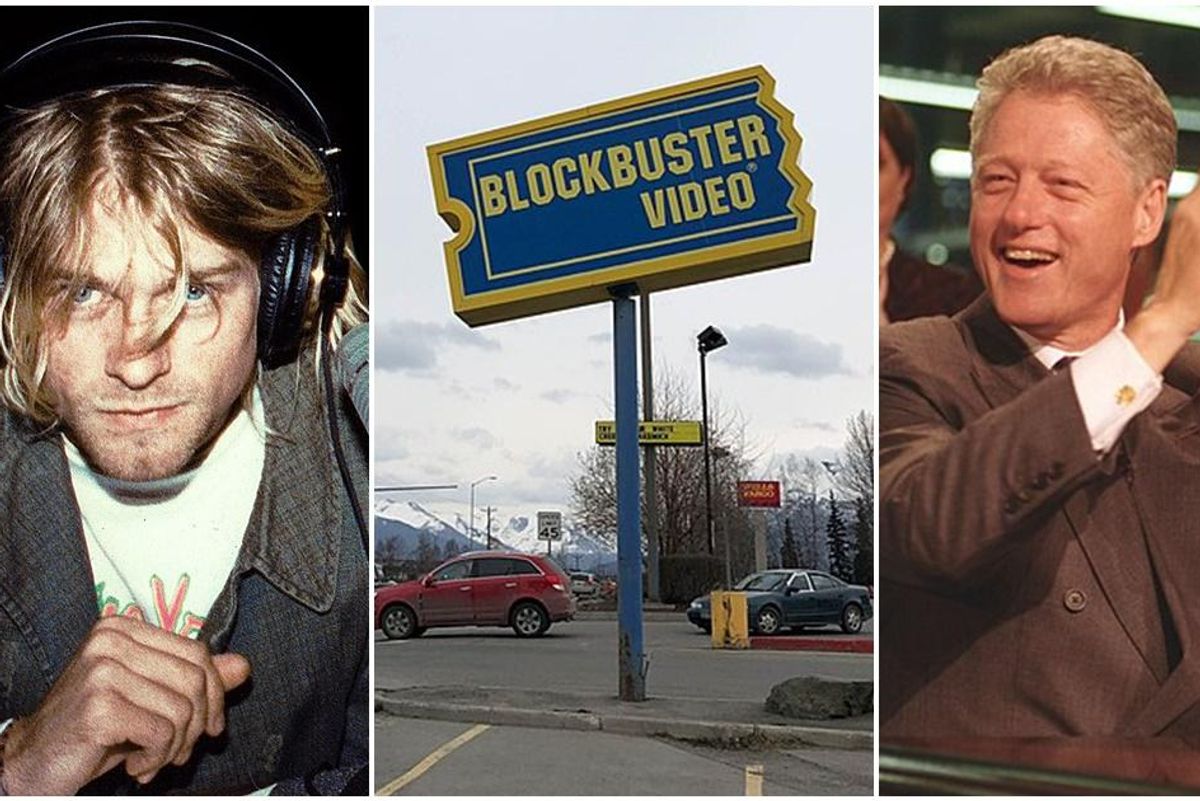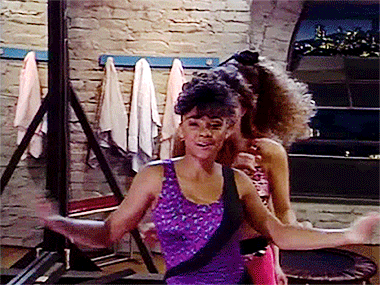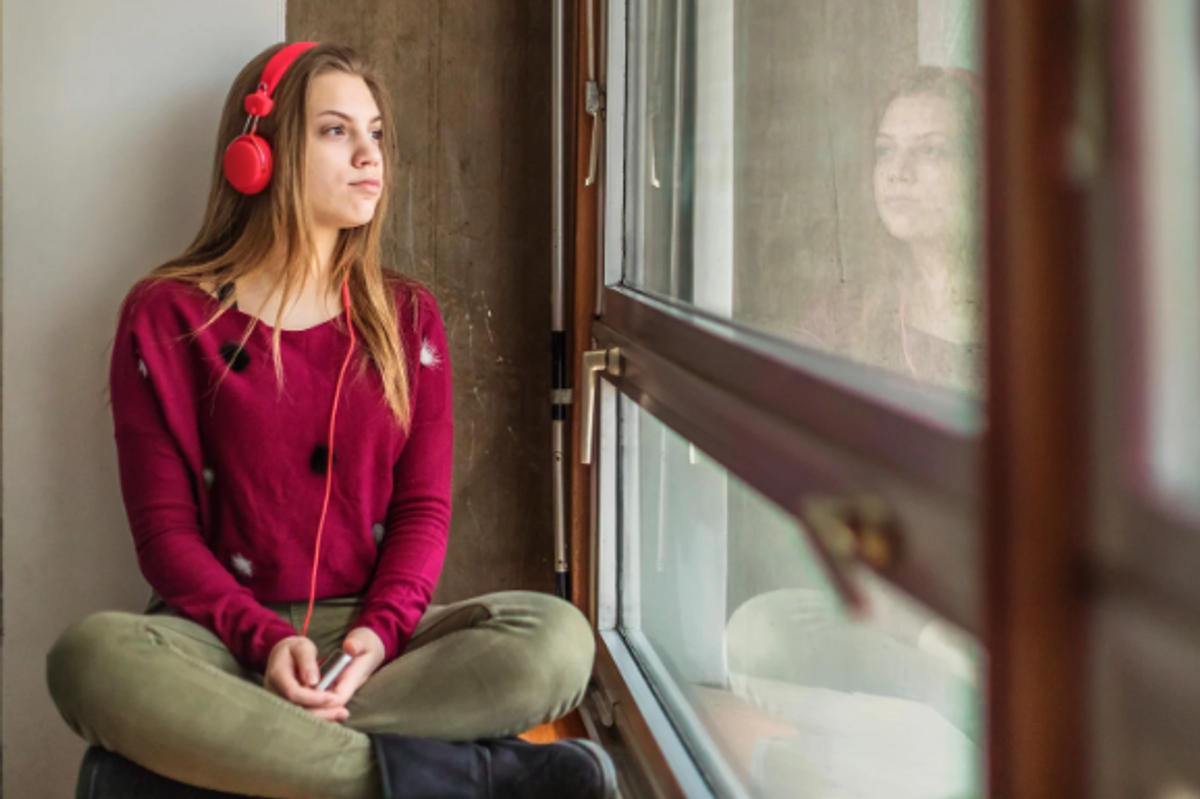Here are 17 things people really miss the most about living in the '90s
Wouldn't you kill for a Friday night at Blockbuster and a pizza? No texts. No TikTok.

Kurt Cobain, Blockbuster Video, Bill Clinton.
The 1990s was a sweet spot in American history. The stifling Cold War with the Soviet Union had just come to the end in 1989 and it would still be 12 years before a new era of fear after the 9/11 attacks.
The 1990s was also a time of prosperity that lifted up Americans across the socioeconomic spectrum and an era that saw unprecedented peace in the world. In fact, things were going so well in America that President Clinton managed to have a budget surplus four years in a row.
The '90s was also the last gasp of the analog era when people couldn't contact you 24/7 and did things for the pure joy of it instead for the likes and shares.
A recent Reddit thread asked "What do you miss about the '90s?" and the answers will take you back to a time that most of us remember fondly. Will people ever say that about the 2020s? Only time will tell.
1. You made plans without having to text people.
"Before we had mobile phones, my wife and I would plan to meet at a certain street corner at a certain time after work. We sometimes had to wait for the other person to show up, but we knew they would." — i_will_be_dead
2. The world was clearly changing for the better.
"There was a period between the Cold War and the War on Terror when it seemed like there was hope for the world." — igetasticker
4. People left you alone.
"Not being contactable 24/7. Peace of leaving school/work and not having to deal with their nonsense till tomorrow." — Soma_Tweaker
5. Air travel without the stress.
"Did you know that before 9/11, it wasn't a massive pain in the ass to go fucking anywhere?! Loved ones could walk you right to the gate. You could bring snacks, sandwiches, and drinks onto the plane with you. The prices at Hudson News were perfectly reasonable, because if they weren't, you could just walk out of the terminal and grab something." — GavinBelsonsAlexa
6. The mall.
"Malls were awesome, and I hate that the strip mall style has taken over. Especially up in Canada, where it gets to -40 in the winter. Back in the day you could legitimately spend hours wandering the mall, indoors and warm. Now it is depressing. Maybe the big malls like Mall of America or West Edmonton Mall are still okay, but the ones in my city are shit." — Lexi_Banner
7. Following a scene.
"In the '90s I would walk to my local record shop and talk to the guy. He would recognize me and ask about my thoughts on the Offspring album I bought last time I was in, and then recommend something that just came in from some guys called Green Day.
I'd then give a listen on the wall-mounted headphone player and take it home. Then, the whole next week would listen to nothing else... It was kind of great." — Koro
8. A genuine good time.
"I think people are more concerned with posting something and going viral now. I really hate that you can just be minding your business, doing something with family or friends and enjoying yourself, and somebody will randomly record what you're doing so they can call you 'corny' and get likes and views." — Enviornmental-Bank81
9. Magazines.
"Everyone had their favorites for whatever hobby or interest you had. For me it was 'Guitar World,' picking up the issues with bands I loved and plinking along to the tab on my crappy electric guitar! For my wife it was 17, checking out the most recent trends!" — JackFairy80
10. Hanging out.
"Honestly the thing I miss the most, and the thing that is so hard to explain to modern kids, is 'hanging out.' Before cell phones, people used to just go to each other's homes, or to some public space, and just spend time together." — Vambot5
11. Making mix tapes.
"It was so much fun to make them, carefully trying to fit as much as you could in the limited amount of time that you had, but still making each song work with the next. Getting one was just as thrilling, especially if you just put it on without looking at the tracklist (if whoever made it included one) and being surprised by each new song." — Edgar
12. Music mattered more.
"Music felt more special because you kind of had to take some risks when buying a cd. At best you could listen to it at one of the stations in the store, but other times you might have heard a song on the radio or watched a music video on MTV. I bought some albums where only the song I liked was good, but still tried to appreciate it all." — plentyfunk66
13. Less pressure to be perfect.
"Nowadays due to social media, especially sites like Instagram, so many young people feel like it's necessary to always be dressed well, always wear a full face of make-up, etc. Sure, we had unrealistic beauty standards and plastic surgery before, but to me it feels like it's gotten much, much worse and also much more uniform than before." — Owezara
14. No 24-hour news cycle.
"Maybe I'm in a minority, but I for one REALLY miss NOT having a 24-hour news cycle. Once that became a thing, it basically prevented journalists from actually doing thorough research before splitting 'information' on TV to satiate their corporate owners." — Minerva_Madin
15. People talked to one another.
"I miss going to coffee shops or bars and being able to meet new random people. I made some of my best friends that way. Now folks just leer up from their phones more often than not." – Shiller_Killer
16. People watched concerts instead of filming them.
"Concerts weren't a sea of phones in the air. People are so concerned with people knowing they were at a concert via social media, that they don't even pay attention or experience the show. It's so dumb." — thebestmike
17. Brick-and-mortar stores.
"I still think this is underrated. Yes now we have a much much wider selection of stuff available instantly, but it used to be extremely fun to go out on a Sunday, go to a record store or video rental store with your friends, discuss options and settle on one." — Humble Shoulder
This article originally appeared on 11.19.21
- Meet Lala the penguin who loved to go shopping at the fish market ... ›
- When was the last time America set off a nuclear weapon? The ... ›
- In the '90s, two companies were using the same motto. They arm ... ›
- People in the 90's and early 2000's trying to explain the internet is pure comedy gold - Upworthy ›
- 17 Things we stopped suing since the year 2000 ›
- Best 1990s memes ›
- '90s trends people want back - Upworthy ›
- Backstreet Boys bring their kids onstage to sing - Upworthy ›
- Best 1990s memes - Upworthy ›
- '90s trends people want back - Upworthy ›
- Man gives epic recaps of 90s movies and TV shows - Upworthy ›
- Normal things from the 90s and 00s that are now a luxury - Upworthy ›
- Common 90s dinner you totally forgot about - Upworthy ›
- Video of high schoolers in 1989 triggers is pure Gen X nostalgia - Upworthy ›
- People share 19 everyday things from the 1990s/2000s that are now considered 'luxuries' - Upworthy ›
- Dad goes viral sharing how 90s parents handled entertaining kids in a totally different way - Upworthy ›
- Pizza Hut Classic restaurants bring back 90s nostalgia - Upworthy ›




 Millennial mom struggles to organize her son's room.Image via Canva/fotostorm
Millennial mom struggles to organize her son's room.Image via Canva/fotostorm Boomer grandparents have a video call with grandkids.Image via Canva/Tima Miroshnichenko
Boomer grandparents have a video call with grandkids.Image via Canva/Tima Miroshnichenko


 Information from the NICABM website regarding the "Window of Tolerance."Photo Credit: The National Institute for the Clinical Application of Behavioral Medicine
Information from the NICABM website regarding the "Window of Tolerance."Photo Credit: The National Institute for the Clinical Application of Behavioral Medicine  Waves cycle in the ocean. Photo by
Waves cycle in the ocean. Photo by
Gen Xers and Millennials share 17 of the strangest things their Baby Boomer parents do
"My mom writes her emails in MS Word, then attaches the Word document to the email."
A Baby Boomer couple.
Generational fights have raged since the dawn of time, and a recent spat between Millennials and Baby Boomers is no exception. Baby Boomers, who raised Millennials, accuse the younger generation of being entitled and irresponsible with money. At the same time, Millennials accuse Boomers of having it easier economically while making it harder for those who came after them.
Where is Gen X in the battle? Probably off in the corner somewhere, saying, "Whatever." Aside from the generational sniping, there are some things the older generation does that are just plain baffling to younger people. Whether it's outdated worldviews, a refusal to adapt to modern technology, or a lack of self-awareness, Baby Boomers can do some strange things.
To help the younger folks get over their frustrations with parents from the "Me Generation," a Redditor asked: "What is the most Boomer thing your parents still do?" The stories were pretty funny and relatable, showing that almost everyone with parents over 60 is dealing with the same thing.
Here are 17 of the "strangest" things people's Baby Boomer parents do:
1. Phones on full blast
"Play iPhone slot machine games at full volume in the doctor’s office."
"My dad pretty much exclusively has his phone on speaker, and just walks around in public talking with it at max volume (and talking really loud himself). I’m like 'Dad, the entire supermarket doesn’t want to listen to you, and Uncle Jim complains about how often you have to pee.'"
2. Still using checkbooks
"My mom balances her checkbook every week. They still have a landline."
"And she probably has way more money than you will until she dies!"
3. Email issues
"My mom writes her emails in MS Word, then attaches the Word document to the email."
"Like the email is just the virtual envelope for the digital letter."
4. Restaurant jokes
"All those little restaurant comments.
'Wow, they'll let anyone in here!' when seeing a friend at said restaurant.
'Thanks for having us, not everyone will' to the waiter at the end of the meal.
'As you can see, it was terrible' when the staff takes away the clearly entirely eaten plate.
'You're going to have me floating away in a minute' when more water is put into their glass"
5. Always have to mention race
"Constantly mentioning the race or ethnicity of everyone she mentions. Never with any negative connotation or comment, but usually, there is no reason for it to be relevant to the conversation."
"My Jewish mother will always whisper the word 'black' in case anyone hears her: 'So the nice black man at the hardware store helped me find the right garden hose.'"
6. Googling their Google
"Typing Google on Google before they Google the thing they’re looking for."
"In the Google search bar, they type Google? Lol."
7. Getting a job is a cinch
"Believing you can walk into a business and hand in a resume. If you have a college degree in any field, they'll hire you."
"Just physically hand over your resume to HR or the hiring manager. You'll make a mark and get hired!! Call the office and ask to speak to HR/Hiring Manager."
Any Millennial who argued with their Boomer parents about how hard it is to land a good job should feel vindicated by a 2022 study, which found that most older Millennials didn't secure good jobs until their early 30s, while most Boomers did so in their 20s. "To secure a good job, young adults need to acquire more education and high-quality work experience than was necessary for previous generations," the researchers wrote.
8. Why are they together?
"Stay married forever while they behave like neither one of them can stand each other."
"I'm on the other side of that. After my mom passed, my dad now acts like their marriage was picture perfect and they were the love of each other's lives, even though they couldn't stand each other for at the very least 40 of the 54 years they were married."
9. Collectables or hoarding?
"Think their 'collectibles' are truly valuable."
"My mom insists her Hummels are going to put my kids through college!"
"Mine are the Thomas Kincade paintings. She has a Victorian glass piece that might actually be worth something, but those damn paintings are the real investment."
10. Can you grab the mail?
"Ask me to bring in the mail when they go away for more than 24 hours."
"My parents think everybody is standing at the door waiting for the mailman every day, and don’t believe me when I tell them that some people go days without checking their mail. They think everybody is waiting for the mailman every day because 'somebody might send them a check.' Like, really?"
11. Zero responsibility
"'Well, I guess I was just a bad father.' Yeah. That attitude of anti-responsibility is exactly why 3 out of 4 of your children don't talk to you."
"Ha! Have the same dad, do we?"
12. Comment on people's appearance
"Comment on EVERYBODY’s body/appearance/weight. The first thing my dad does after not seeing me for a year is poke me in the gut and tell me how fat I am."
13. Boomer panic is real
"Literally throwing their hands up in a panic when they don't understand something. Where did they learn that?"
"Or just saying 'well, I don't know', especially when that comes right after you explaining it and showing them how to do something, with them nodding along and asking relevant questions all the way through."
In a video by YourTango, editor Brian Sundholm tried to explain Boomer panic in an empathetic way: "Most of us nowadays know the importance of recognizing and feeling our emotions." Sundholm then quoted therapist Mitzi Bachman, who explained that when people struggle to express their emotions, it can result in an "unhinged" reaction.
14. Annoying Facebook posts
"Post nonsensical rants on Facebook for other boomers to like, share, and comment. Often these rants are political, but not always. Basically cringe-fest."
"Most people won't do it, but share this post if you believe in god and freedom."
"I do NOT give Facebook permission to use my photos and personal information!"
15. Dinner pushers
"While we're eating breakfast. What do you want to do for supper?"
"Can't we enjoy this meal without worrying about the next?"
16. They print everything
"My boomer in-laws print EVERYTHING! The number of times I have said, 'quit wasting ink, email it to me, or text me the link. Or just text me the schedule, don't print it out.' GPS on their phones? Nope...print a map."
"Boomers and their paper man. My dad has finally started using the internet, but he still prints everything he likes. Like he'll see a boat listing on Craigslist and print the entire page, including a massive color photo of it, and he's definitely not going to be buying it either. He's got a stack of papers that is the internet that sits by his recliner. He just sits there with Fox News on (though it's usually muted for some reason, that's a plus) and looks at his papers."
17. Flirting with servers
"My dad is 77 still flirts with the young waitresses. It's f**king weird for everyone."
"He thinks he is in cute old man territory, but he is not."